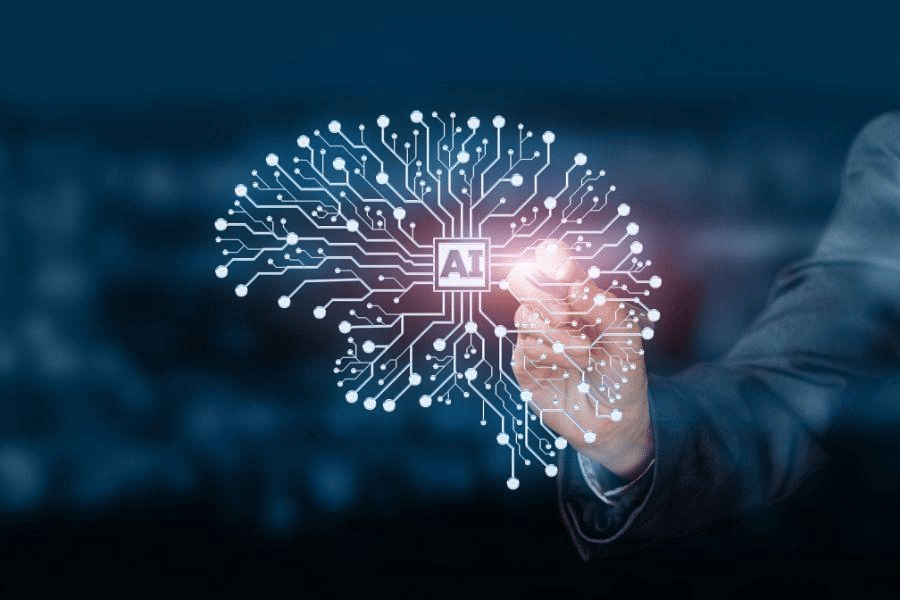What are the main Legal Tech trends of 2022?

It’s the beginning of 2022, and while like all new years it marks a new beginning, the world is still facing a pandemic of great proportions.
Law firms, accounting firms and other legal organisations are looking to adapt to this “new normal” that is rapidly changing the major trends that were already underway in the organisation and digitalisation of work.
New technologies in the field of law are, however, above all a boon for the field. They allow legal and accounting professionals to distinguish between high value-added services that cannot be automated today and lower value-added services that, while essential for the execution of their missions, can be automated in order to devote more time to really helping clients.
But what are the major trends to be expected in the legal tech market for 2022? How will these technologies transform the organisation of legal and accounting practices? Let’s get into it.
1. The rise of intelligent documents
The creation and rollout of intelligent documents is one of the hottest trends in legal tech solutions.
Intelligent documents allow you to save a lot of time on file follow-up, the retrieval of final documents, and the generation of complementary documents. You need to configure these documents upstream, providing specific conditions that will be checked and validated automatically in order to move to the next step in your workflow. The specific conditions that define these cases can be added to the workflow at the time of its creation. You can also add conditions to an existing workflow to enhance it.
Smart documents can be built quite easily, without code, and can be fully customized to your needs with a solution like Alf.
This can save up to 90% of your contract drafting time, reduce the risk of errors and improve the overall organisation of your firm.
You may also be interested in this article: 5 ways to enhance your productivity with legal tech
2. Business process automation through the creation of automated workflows
A workflow can be defined as a representation of all the operations to be carried out to accomplish tasks or activities that together form a single business process.
Therefore, a workflow is used to describe all the actions and tasks to be distributed among the different actors of a process, defining the participants, deadlines, and validation modes, and providing each actor with the information necessary to perform their task.
With the emergence of new technologies, workflows can now automate a large number of administrative and/or time-consuming tasks in order to increase productivity. This is known as legal workflow automation.
Legal workflow automation uses processes in which technology facilitates, structures and streamlines the execution of tasks. As with intelligent files, the main benefits of automated workflows are:
- saving time for lawyers and other legal and accounting professionals
- reducing human error
- Improving the efficiency of the firm or the department as a whole
Learn more about business process automation
3. Remote Work

It wasn’t part of everyone’s habits before the pandemic, but remote work has accelerated sharply in 2020 and 2021 and will continue to grow in 2022.
The number of days worked from home in December 2020 was very high, averaging 3.6 days, up from 1.6 days at the end of 2019. And importantly, 86% of those working from home want to continue doing so (Annual Remote Work Barometer 2021).
This naturally leads to a new form of work organisation and an increased digitisation of the structure of law firms and legal departments.
For example, remote working requires the use of video conferencing tools and online project management, while also making cloud-based infrastructures even more useful.
Moreover, it is very easy to perform a set of administrative tasks while telecommuting, thanks to the development of community tools that facilitate file follow-up with dashboards, reports, information on the progress of the files… all directly integrated in a platform.
The field of law is no exception to this trend, quite the contrary. There is no doubt that the adoption of these tools for law firms, accountants and other legal departments will continue to grow in the years to come.
Learn more about the digitization of law and accounting firms
4. The development of no-code
Lawyers, accountants, and jurists are not necessarily experts in new technologies, nor are they developers. For these new technologies to be useful and used by the greatest number of people, they must be easily integrated into legal organisations and simple to use.
No-code is an approach to software and application development that requires few or no programming skills.
Thus, the no-code approach dissociates programming languages and syntax from logic, instead taking a visual approach to software development to make it much easier to pilot and manage.
For “low code”, the principle remains the same, although some small amount of programming skills could prove useful.
In terms of no-code, for example, ALF allows you to integrate automated legal workflows into your organization without any technical knowledge, while still customising them to your needs.
No-code is booming in many fields of activity and is also developing at high speed in many services offered to legal professionals.
This trend will accelerate all of the technologies discussed in this article. Lawyers, chartered accountants and other legal professionals could soon see the technical aspect of these tools as a brake that no longer exists.
5. Better collaboration between clients and law firms or accountants
The ability to facilitate seamless collaboration and communication between your firm and your clients is a necessary skill to remain competitive in the increasingly digital legal landscape. While the concept of client collaboration tools is not new, the processes, capabilities and breadth of functionality offered by these tools have evolved considerably. The new generations of what are commonly referred to as “client portals” are no longer limited to file sharing and simple communication. These portals can now enable real-time collaboration, much more efficient project management, automated business intelligence reports, and more.
Thomas Malone, an organizational theorist at MIT, has written that “some of the most important future innovations will come not from new technologies but from new forms of collaboration.”
We certainly agree, but that’s not all. In addition to providing greater transparency between legal professionals and clients and facilitating collaboration and communication between the two parties, new ways of using client portals have the side effect of modernising and improving the client experience through smart, personalised intake forms and secure, integrated collaborative workspaces.

Artificial intelligence is developing and evolving in almost every industry and will disrupt almost every profession in the coming years.
While some professions welcome change and innovation, others are concerned about what artificial intelligence could mean for their future. Many legal and financial professionals probably fall somewhere in between.
Nevertheless, legal professionals have no choice but to recognize that new technologies are changing the way they work and the information they have access to.
Artificial intelligence is still in its infancy, but for the so-called “intellectual” professions, the arrival of quantum computers promises major transformations in areas that were previously reserved for human analysis.
If, at first, artificial intelligence will be used to improve the technologies we mentioned before, and thus further improve the productivity of legal professions, the changes it will bring will be more radical in the medium to long term.
The dawn of artificial intelligence will probably provide a great deal of legal information that is currently unavailable to the non-lawyer through the simple use of a chatbot in the years to come. Some software is already trying to measure the percentage of chances of winning a lawsuit and the potential gains in terms of damages. And this is all just the beginning…
In 2022, legal departments, law firms, and accounting firms will carry out major digital transformation projects and turn to these solutions to solve a wide range of problems and be more productive.
The most innovative and simple technology for firms to deploy today is in the area of automated workflows. In addition to the direct productivity gains they bring, their integration within a firm will help clarify the tasks performed within teams.
Some workflows cannot yet be automated. But the more artificial intelligence develops, the fewer they will be.
Lawyers will not work tomorrow as they do today. One thing is certain, these new technologies must not be ignored or we will fall seriously behind our competitors.
The world is changing at a rapid pace. So buckle up and get ready for an exciting new year!
A lawyer for 20 years with international law firms and worldwide companies (Canal+, PwC Legal, Nomos, Amazon), I’ve had the experience on the inside: too much time wasted on regularly monitoring recurring tasks linked to files, with low added value. Alf, the first workflow automation platform for the legal files, was designed and developed to respond to this critical problem. Customizable, collaborative and accessible in all languages, Alf is also part of a GreenTech approach that encourages responsible innovation by reducing your carbon emissions. — Sabine Zylberbogen, Registered lawyer and Founder
